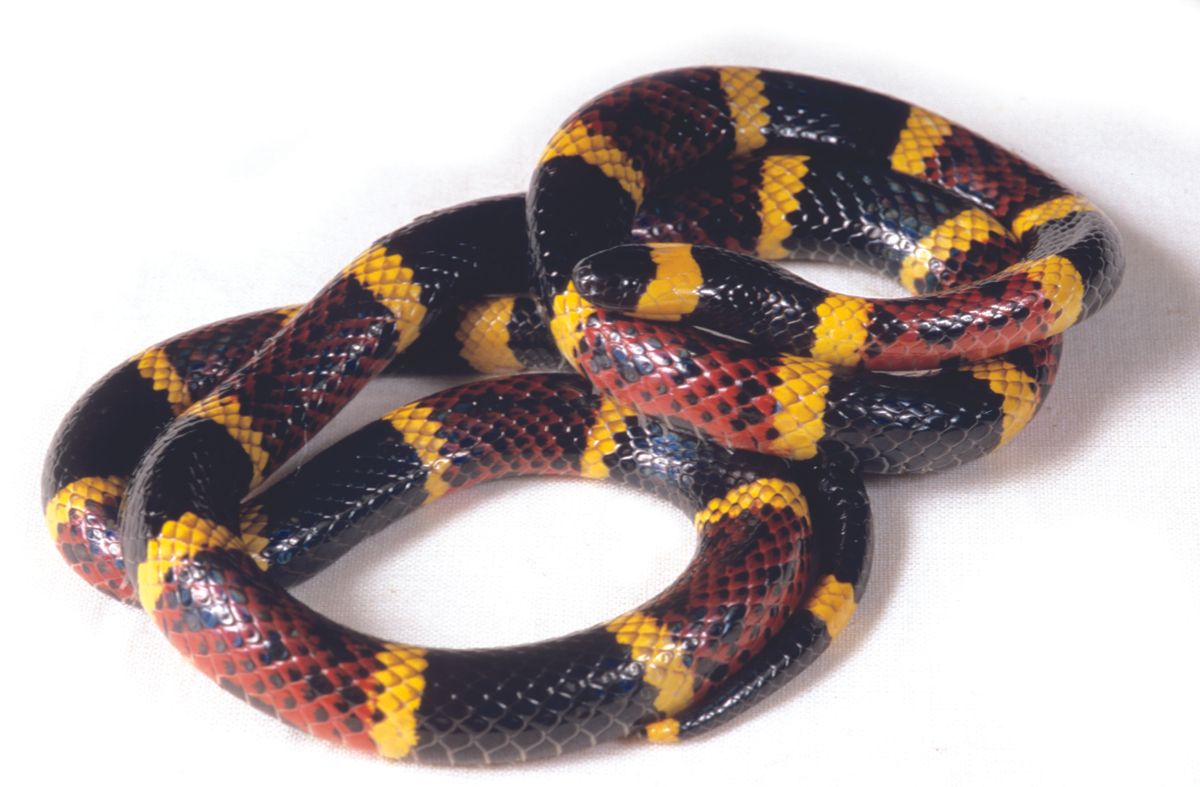Ouch! New Pain Sensors Explain Why Snake Bites Hurt

The Texas coral snake may seem benign enough, with crayon-colored rings adorning its body, but this serpent packs a mighty punch in its toxin-laden venom. And new research finds these toxins trigger a previously unknown pain mechanism in humans.
There are many different types of pain, said study researcher David Julius, of the University of California, San Francisco. Some respond to changes in heat or pressure; for example, if you burn your finger or get punched. Others respond to different chemicals, such as acids. Your body senses the painful trigger with a receptor on a pain-sensing nerve in your skin. That nerve signals the brain, which then tells the body that the pot is hot or the acid is burning you.
It seems the coral snake triggers a novel pain receptor on nerves. The finding could help researchers develop drugs to treat snakebites or other painful phenomena in a targeted fashion without having to use opiates. [5 Facts About Pain ]
"We find natural products from animals or plants that generate pain sensations and find out what they target on the cells," Julius told LiveScience. "In the future, these kinds of toxins will help us understand how these [pain-sensing] molecules are activated… that sort of information is important for producing drugs to reverse the action."
Painful toxin
Julius and his colleagues screened a wide variety of snake venoms, looking specifically at their ability to activate certain pain-relaying nerve cells in rats. The Texas coral venom activated some of these nerve cells, a type of chemical-based pain-sensing cell that communicates the conditions of the body to the brain.
In that venom, the researchers found a toxin they named MitTx, which opens a channel on the outside of the skin's nerve cells, sending a signal up to the brain. Oddly, even though MitTx isn't acidic, it turned on a channel related to those that usually respond to acids.
Sign up for the Live Science daily newsletter now
Get the world’s most fascinating discoveries delivered straight to your inbox.
The channels' acid-sensing relatives produce pain when tissues are deprived of blood and oxygen, but MitTx is specific for a channel that hasn't been implicated in pain sensation before.
"The one [pain pathway] that we've identified with this toxin isn't the one that people have paid the most attention to," Julius said. "This is an important site of action, and we should look at it more closely in how it produces pain."
Snake venom
The Texas coral snake (Micrurus tener tener) is about 24 inches long (2 feet) and is usually shy and secretive, as well as nocturnal, so it's not often you run across one.
They don't usually bite humans unless provoked, but their venom is a powerful neurotoxin and without treatment the bites are fatal about 10 percent of the time. Luckily, no deaths from coral snake bites, the Texas variety or others, have been reported in the United States since coral snake anti-venom has been available to hospitals. Even when not fatal, however, the venom of the Texas coral snake causes extreme pain that can last for hours.
Because this pain is mediated through this newly discovered pathway, it's possible that traditional pain relievers such as aspirin, which work through different receptors, wouldn't help the pain. The bites, if painful enough, are usually treated with opiate pain relievers, like morphine, but a more targeted and less addictive reliever would be beneficial, according to the researchers.
"Different types of injuries mediate pain through different types of mechanisms," Julius said. "That's the secret — figuring out what the mechanism is for different types of pain, so you can eventually target the right kinds of therapeutics for that."
The study is published in the Nov. 17 issue of the journal Nature.
You can follow Live Science staff writer Jennifer Welsh on Twitter @microbelover. Follow LiveScience for the latest in science news and discoveries on Twitter @livescienceand on Facebook.
Jennifer Welsh is a Connecticut-based science writer and editor and a regular contributor to Live Science. She also has several years of bench work in cancer research and anti-viral drug discovery under her belt. She has previously written for Science News, VerywellHealth, The Scientist, Discover Magazine, WIRED Science, and Business Insider.












